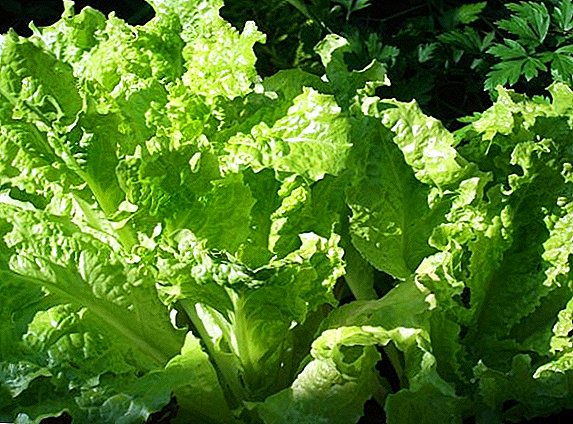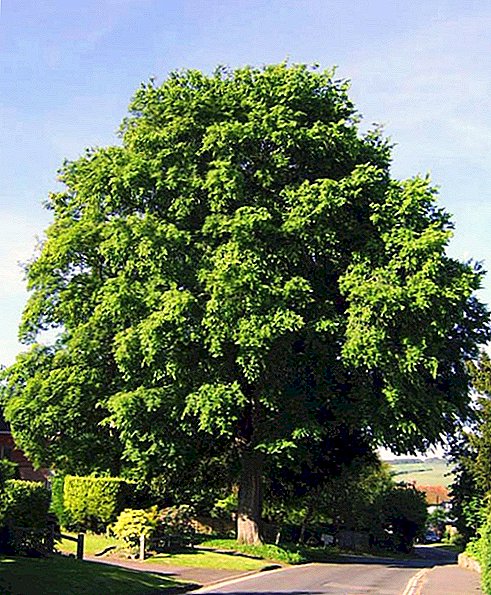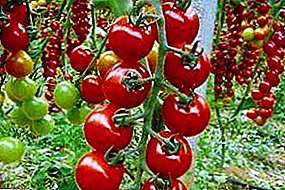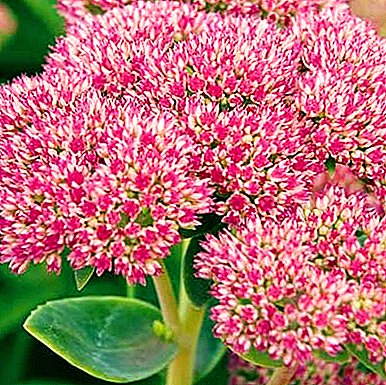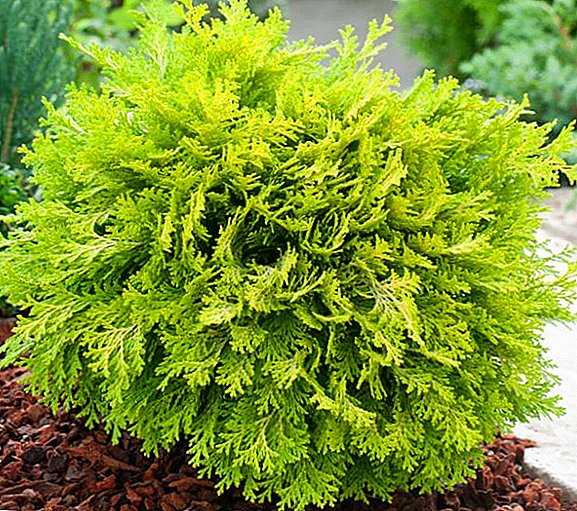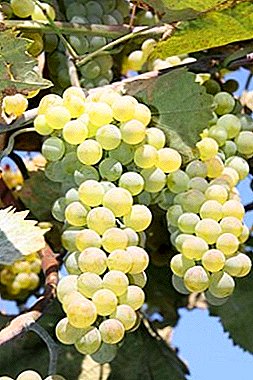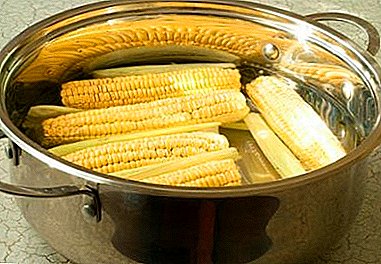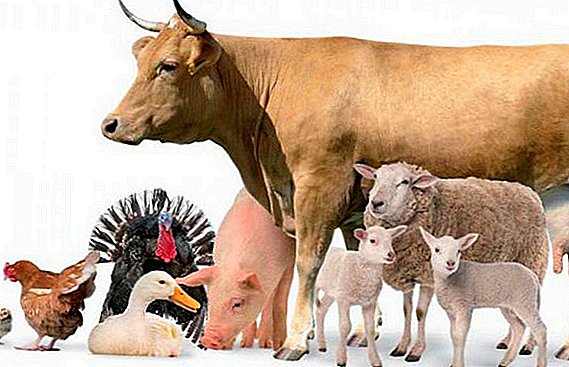 Man began to domesticate wild animals to obtain a stable source of food 10-12 thousand years ago. Even then he began to select individuals with the necessary qualities. At first, these qualities were classified unconsciously, but over time they began to be selected by specially developed methods. Consider what forms, methods, signs and indicators used in the selection and selection in agricultural livestock.
Man began to domesticate wild animals to obtain a stable source of food 10-12 thousand years ago. Even then he began to select individuals with the necessary qualities. At first, these qualities were classified unconsciously, but over time they began to be selected by specially developed methods. Consider what forms, methods, signs and indicators used in the selection and selection in agricultural livestock.
What is the selection and selection of farm animals
For the creation of new breeds and the improvement of existing ones in productive qualities, viability, fecundity and other desirable qualities of domestic animals, the selection and selection of individuals for a tribe is used.
In breeding work, first carry out the selection of males and females with the best performance for reproduction. Then among the selected animals is the selection of parental pairs in order to obtain offspring with the best characteristics. 
Forms of selection
Another Charles Darwin noted that the formation of new animal forms and the improvement of existing ones is due to natural and artificial selection.
Did you know? The famous naturalist Charles Darwin did not have a biological education, he was prepared to become a priest or a doctor. He was engaged in self-education, and his father Robert Darwin, a wealthy doctor and financier, often reproached his son for his fascination with animals and did not consider this a serious occupation.By natural selection, we understand the survival and preservation of such organisms, which, thanks to their individual changes, better adapt to the conditions of the external environment. Thus, through the survival and reproduction of the most adapted individuals, the evolution of wild animal and plant species occurs.
Artificial selection is carried out by man by selecting for a tribe and saving for breeding those individuals that have desirable qualities.
 How has the horse changed as a result of natural selection
How has the horse changed as a result of natural selection
Natural
This is the main process of evolution, as a result of which organisms survive, the most adapted to the existing habitat. It is the only reason for their adaptation to changes in the natural environment, since as a result of it mutations are fixed that contribute to this. It was of great importance when the man was being domesticated by wild animals, but for modern animal husbandry it is no longer so relevant.
Learn how to choose rabbits, geese, chickens for breeding.
Artificial
This is a selection by humans of animals with qualities that are valuable to agriculture, for obtaining offspring from them with the necessary properties. It is also called national selection, and thanks to it, there are now a large number of different breeds of domestic animals.
There are different forms of artificial selection.  Variety of dog breeds
Variety of dog breeds
Mass
This selection is carried out according to the peculiarities of farm animals that are of interest to man - these are productive qualities, exterior, vitality, constitution, reproductive abilities, and others. The origin and quality characteristics of the offspring are not taken into account.
One of the forms of mass selection is group, when the selected individuals are divided into groups depending on the purpose of further breeding.
Individual
Takes into account the genotype of selected animals. When it is considered their origin, the quality of the offspring, its relatives, the pedigree records are kept.
Individual selection is considered more productive than mass selection and it is most often used in breeding work.
Learn how to mate horses, pigeons, cows.
Indirect
Based on the law of correlation, which says that a change in some signs pulls a change in others. Indirect selection occurs on the signs that are not of interest from agricultural livestock. But these signs suggest the presence of other, more valuable qualities in the selected animal. For example, bulls manufacturers are checked for the presence of defective genes. 
Stabilizing
It is directed on preservation and fastening in a livestock of animals of qualities, valuable to animal husbandry. When it is rejected individuals who have deviations from the established norms. It is important for industrial animal husbandry, in which the herd population should be of the same type so as not to disrupt the technological process. For example, cows are rejected with an udder and nipples that do not allow milking machines to be attached to them.
Learn how to keep a parent flock of chickens.
Signs and indicators of selection
Selection is carried out on various grounds and indicators. Signs are valuable from the point of view of agriculture quality, because of which animals are bred (milk production, meatiness, quality of wool, fur and others).
The indicators relate to the quantitative characteristics by which the necessary signs develop (live weight, meat yield, amount and fat content of milk, wool length, etc.).
The objectives of the selection may cover a different number of signs and indicators. Selection by a large number of signs is not easy and not always effective. If you select for a small number of them, you can lose sight of other important qualities, the loss of which will harm the productivity of animals. 
It is optimal to conduct a selection on the basis of a set of features that affect the performance characteristics, the constitution and the health of selected individuals.
Important! It is not necessary during the selection of animals too much to strive for productive indicators. The result of the selection in Holland of cows by the amount of milk was the weakening of the cattle constitution and the low fat content of milk.
Evaluation and selection of animals by constitution, exterior and body weight
Breeders have long noticed the existence of a relationship between the external characteristics of animals and their qualities, useful for use in agriculture. Based on this, certain requirements for performance, constitution, exterior and body weight were developed.
The addition of an animal affects the allocation of types in the direction of use: meat, meat-dairy and dairy, in cattle; meat, meat and skin, and down in rabbits, etc.
During the selection of dairy-type cows, attention is paid to the pedigree signs, sizes and shape of the udder and nipples, parameters affecting the respiratory organs and the work of the digestive tract (chest depth, development of the peritoneum, etc.).

For beef cattle breeds, developed individuals with a physique are selected that are most beneficial for higher meat yields (developed muscles, wide and round shapes, etc.).
Animals with defects that reduce productivity (narrowness of the pelvis, slack back, weak limbs, etc.) are rejected. Selection according to the constitution, exterior and body weight is aimed to strengthen and consolidate among the livestock of farm animals a strong and proportional addition, the desired size.
Familiarize yourself with common breeds of meat, dairy, meat and dairy cows; riding and heavy horses; fur and meat rabbits; goats; merino, dairy, fat-tailed, meat sheep; pigs.
By productivity
This type of selection is crucial in livestock farming. Productivity is determined by the quantitative and qualitative characteristics of products obtained from one individual over a specified time. For each type of farm animal and breed has its own standards and features.
Dairy cows are selected based on the milk yield for 305 days of lactation, taking into account age and breed, milk fat and protein content, lactation curve. Evaluation is made by feeding, keeping and using animals according to established standards and norms. It is best to conduct such an assessment for several periods of lactation.

Beef cattle are selected during life and after slaughter. In living specimens, the exterior, weight gain and live weight are estimated upon reaching a certain age. Then, such a preliminary assessment after slaughter is supplemented with basic indicators of meat productivity, such as slaughter yield, the ratio of fat, meat and bones, calorie, taste, and others.
Pigs are selected for productivity, assessing their fecundity, the number of cubs in one litter, precocity, the quality of meat carcasses.
Check out the best breeds of chickens in different areas of productivity.Fine-wool and half-fine sheep are selected for qualitative and quantitative indicators of wool sheared for a year, the quality of smushki is taken into account for sweets, fur-coat breeds are judged by the quality of sheepskin, fat tail and meat-wool by the quantity and quality of meat.
Among agricultural birds in egg breeds, egg production and egg parameters are taken into account; in meat birds, the rate of increase in live weight, feed costs per 1 kg of weight, taste, and so on.
Selection of chickens and roosters for the tribe: video
According to longevity
Animals inherit longevity from their parents. Different breeds and lines of its duration may vary. For livestock, it is important to select for the tribe highly productive individuals that retain their valuable qualities for a long period.
Did you know? Aberdeen-Angus breed of cows is famous for its longevity - bulls live for 18-20 years, and cows reach the age of 25-30 years. A large life span is also measured by Tagil, Red Tambov and Kostroma cows.The intensive way of animal husbandry in large farms had a negative impact on the life expectancy of cattle, and the use and breeding of breeds with great longevity is very important for them.
According to technological features
Became important in the industrial development of animal husbandry. Breeders began to take into account the adaptability to the technological conditions of detention, which are not always well reflected in animals.

Intensive livestock often includes restrictions on walking and keeping in small areas. Such conditions are best tolerated by individuals with a stable nervous system, normally responding to content in large crowded groups.
Milking the cows with hardware has put forward a number of requirements for the parameters of the udder and the teats of the dairy breeds, the milk yield rate. When keeping animals on industrial areas, they began to select livestock with strong limbs and hooves, since the hard surface covering such complexes leads to their injury.
Check out the breeds of geese, guinea fowls, quails, turkeys, ducks, pheasants for home breeding.
By origin (genotype)
Selection by genotype contributes to the selection of an animal according to its supposed qualitative characteristics even before its birth. Therefore, the breeders are the pedigree of animals, indicating ancestors and their productive abilities, pedigree and other signs. Most of the prices are of individuals in whose pedigrees a stable growth of productive qualities is observed and ancestors are present with record numbers.
During the selection, the productivity of the sidelines (brothers, sisters and others) is also taken into account. 
By the quality of offspring
This selection allows you to determine the value of animals on the tribe. It usually aims to identify the best animal producers that will provide specially selected females with offspring with desirable qualities.
For multiple animals (eg pigs), females are equally important. For this, in the pig farm, more individuals are taken for the first farrowing than is necessary for the reproduction of the livestock.
Evaluation occurs in terms of litter size, milkiness, weight gain and other characteristics, and then sows with the best indices fall into the main herd.
Learn how to contain a sire.
A sire is selected, assessing his daughters on the qualitative and quantitative characteristics of milk yield, exterior and weight, and the presence of technological signs.
These indicators are compared as follows:
- with daughters from other manufacturers;
- with mothers;
- with other peers;
- with averaged herd data;
- with standards and regulations for the breed.

If these figures were up to par, then the bull is selected as a producer, if they are declining, then such a male is used limitedly or rejected.
For the correctness of the progeny score, other factors are also taken into account:
- age of parental pairs;
- the influence of mothers;
- feeding and housing conditions;
- comprehensive assessment and analysis of all the resulting offspring;
- accuracy of estimates of breeding traits;
- the number of all offspring and its genealogical combinations.
Find out what are the rules of keeping birds in private farmsteads.
Forms of selection
In animal husbandry, there are different forms of matching pairs.
Individual
With an individual selection, each female is individually chosen for mating of the male to produce offspring with the best quality indicators. Such a choice is more time consuming and expensive. It is used mainly for leading broods for breeding.
It is not suitable for artificial insemination at breeding enterprises, as in this case a lot of seed from the best producers is wasted.  Meat breed pigeons - King. Pigeons are monogamous, therefore individual selection is justified.
Meat breed pigeons - King. Pigeons are monogamous, therefore individual selection is justified.
Group
When applying group selection to the group of females, at least two males are selected.
Group selection has three types:
- differentiated. When choosing such a group species, the best producer is chosen for fertilization of the group of females, and when there is not enough sperm, another one is used that is not the best by producer. This selection is often used at breeding stations for the tribe, as well as for the artificial insemination of animals;
- equalizing. With this type, 2-3 males are chosen, which have similar quality indicators, and are used on the same group of females with the same sequence. This type is used for testing, as well as to improve productivity and other qualities. Then the male producer, who gave the highest rates, becomes the leader, and the rest receive the status of reserve ones, or, with poor results, they are simply rejected. This view helps to choose the most efficient manufacturer;
- undifferentiated. When using this type of males, which have different quality indicators, they use for fertilization a group of females in the order of alternation. This method is rarely used at stations for carrying out breeding work, and it gradually disappears from the practice of selection in animal husbandry.

Selection methods
There are two methods of collection - homogeneous and heterogeneous.
Homogeneous (homogeneous)
This method consists in the selection for the male sire. At the same time, both individuals have the same necessary qualities that they want to consolidate and strengthen in a future generation.
For example, the fastest horse is chosen for the fastest horse, and a bull with a high milk yield is picked by a bull, which has high milk yield by genetics, that is, the choice is made on the same grounds.
Did you know? So, the famous scientist-livestock Kuleshov PN in his works, he noted that the degree of similarity between selected individuals may be different, but the stronger it is, the greater the likelihood of inheritance of the desired trait.
After receiving the offspring are selected for breeding breeding individuals with the most pronounced required qualities that were from their parents. This method allows to improve and consolidate good factory qualities in the future offspring.
The selection of animals and their reproduction according to the necessary traits and qualities increases the necessary traits in each new young, as well as improves the breeding dignity of the breed.  Homogeneous selection contributes to the formation of homogeneity of certain qualities in the herd. Thus, the uniformity of wool handed in from sheep is considered a major priority in the production of fabrics.
Homogeneous selection contributes to the formation of homogeneity of certain qualities in the herd. Thus, the uniformity of wool handed in from sheep is considered a major priority in the production of fabrics.
The downside of such a selection is the increase in homozygosity, reduction in variability, productivity, decrease in viability.
To correct any deficiencies in the breed, this method cannot. Moreover, it does not contribute to the emergence of new positive qualities.
An extreme variant of the homogeneous method is breeding with the selection of animals that have related relationships (inbreeding).
Разнородный (гетерогенный)
Заключается в подборе для спаривания животных, которые имеют отличия по признакам и качествам. The purpose of this method is to enhance the variability of symptoms, improve the productive properties, resistance, reproductive functions, reducing negative qualities.
For him, take into account the quality of productivity, features of appearance, breed and pedigree. In this case, individuals selected for mating may differ by age, and the degree of opposing differences may be different. Having different differences in some qualities, individuals may have similarities in others.

Using a heterogeneous selection method involves obtaining offspring, which will inherit the positive qualities of both parents, as well as contribute to the development of the desired signs of productivity and qualities in animals. The next generation will have better heredity.
The degree of variability of future offspring with this method depends on the quality indicators of each of the parents, who have differences in average throughout the herd. Volatility is especially enhanced and the correlation between the productive indicators of the mother and their daughters decreases in the case when the parents' indicators differ in different directions on average in the herd.
Important! In order to remove in a future generation a certain lack of one parent, it is impossible to select another parent who, although he can eliminate or reduce this drawback, but at the same time has other negative qualities.
The heterogeneous method is also used to eliminate the shortcomings that one of the parents has so that they do not affect the future generation. This selection method is called corrective, and also correcting or improving.
But it is worth considering that a specific drawback cannot be removed when selecting another parent who has a completely opposite drawback. Thus, the lack of horses in the form of limb-size can not be corrected by selecting a stallion, who has a clubfoot. 
So, for a cow with a good milk yield, but low milk fat content, you should not choose a manufacturing bull with genetic indicators that increase the milk fat content, but reduce milk yield. Such a decision will contribute to the loss of a useful trait that a cow has.
But for a cow with a low fat content of milk, to improve breed and productivity, it is better to choose a manufacturing bull with genetic properties that have a high content of fatty substances in milk. Individuals with a fragile body structure are selected individuals with a fairly powerful body structure.
With heterogeneous method heterosis often appears. Extreme forms of such a selection - crossing and hybridization.
It should be noted that the homogeneity and heterogeneity of selection is a relative concept, therefore, according to one feature, the selection will be by the homogeneous method, and the other - by the heterogeneous. So, for example, if a group of cows gives milk 4.5 tons per year with a fat content of 3.7%, and a producer bull is attached to them with genetic indicators for a yield of 9 tons with a fat content of 3.8%, then the yield will be heterogeneous, and in milk fat - homogeneous. 
Proper selection and selection of animals is important for achieving high rates in agriculture. Industrial conditions of animal husbandry impose new requirements on animals, and modern selection takes them into account, selecting animals for the necessary characteristics. The best results in the choice of animals and the formation of pairs gives a comprehensive approach.


